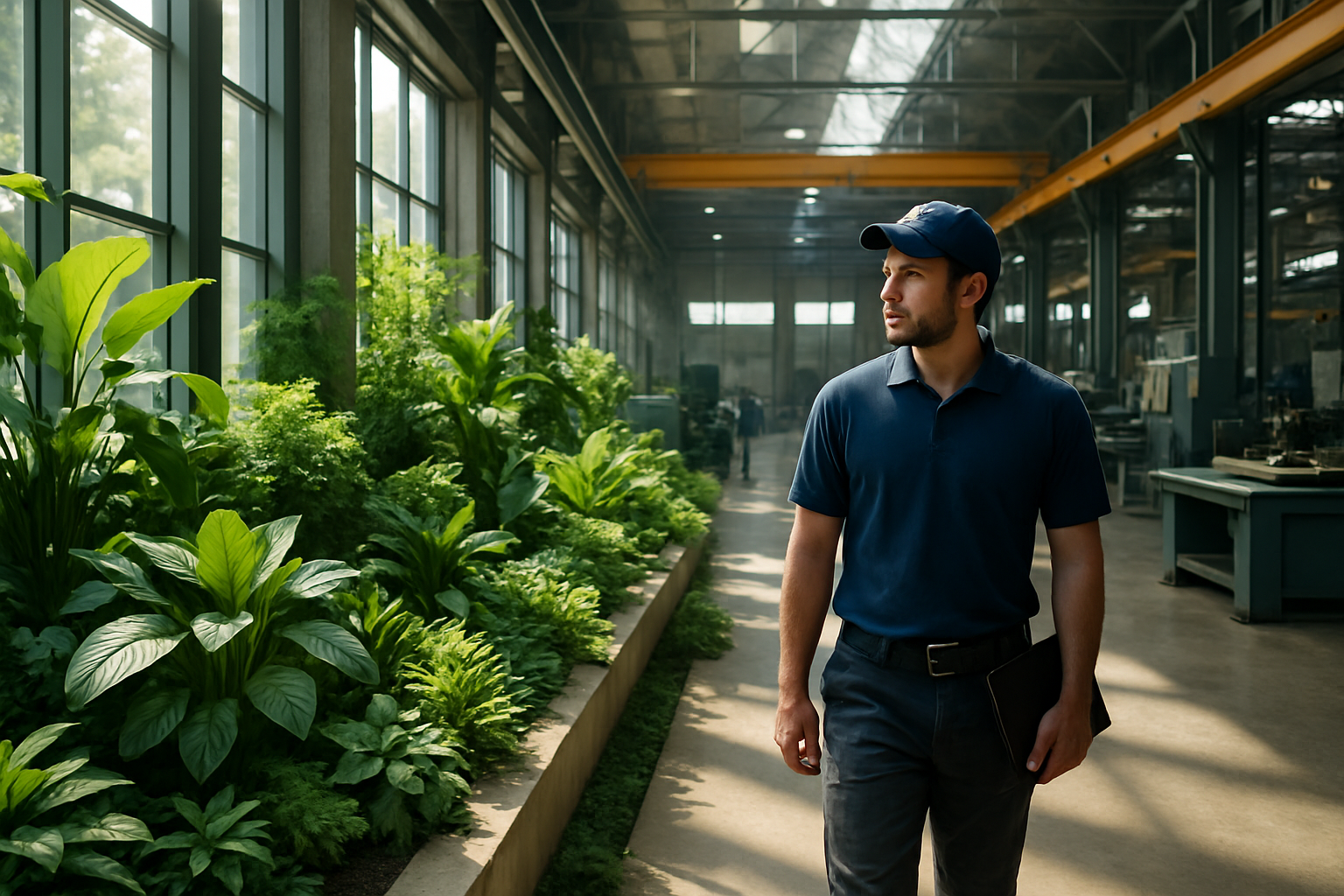Biophilic Design in Industrial Spaces: Boosting Productivity and Well-being
The integration of nature-inspired elements in industrial environments is revolutionizing workplace design. Biophilic design, a concept that incorporates natural features into built spaces, is gaining traction in manufacturing facilities, warehouses, and other industrial settings. This approach not only enhances aesthetic appeal but also significantly impacts employee well-being, productivity, and overall operational efficiency.

The Science Behind Biophilic Design
Biophilic design is rooted in the concept of biophilia, which suggests that humans have an innate connection to nature. This theory, proposed by biologist Edward O. Wilson, posits that our affinity for natural environments is deeply ingrained in our biology. In industrial settings, where employees often spend long hours in enclosed spaces, incorporating elements of nature can have profound psychological and physiological benefits.
Research has shown that exposure to natural elements, even in simulated forms, can reduce stress, improve cognitive function, and enhance overall well-being. A study published in the Journal of Experimental Psychology found that workers in environments with natural elements were 15% more productive compared to those in bare workspaces. These findings highlight the potential of biophilic design to not only improve employee satisfaction but also drive tangible business outcomes.
Key Elements of Biophilic Design in Industrial Spaces
Implementing biophilic design in industrial environments requires a thoughtful approach that balances natural elements with functional requirements. Some key elements include:
-
Natural lighting: Maximizing natural light through skylights, light wells, or strategic window placement can significantly improve mood and productivity.
-
Green spaces: Incorporating indoor plants, living walls, or outdoor green areas provides visual relief and improves air quality.
-
Natural materials: Using wood, stone, and other natural materials in construction and furnishings creates a more organic feel within the industrial setting.
-
Water features: The sound and sight of water, whether through fountains or small ponds, can have a calming effect on employees.
-
Biomorphic forms: Incorporating patterns and shapes inspired by nature in architectural elements and interior design can subconsciously connect occupants to the natural world.
Overcoming Challenges in Implementation
While the benefits of biophilic design are clear, implementing these concepts in industrial spaces presents unique challenges. Safety regulations, equipment requirements, and the need for efficient workflows must be carefully balanced with design elements. However, innovative solutions are emerging to address these concerns.
For instance, modular green walls that can be easily moved or reconfigured allow for flexibility in industrial layouts. Similarly, advances in LED technology enable the creation of circadian lighting systems that mimic natural light patterns, enhancing employee well-being without compromising on energy efficiency or interfering with industrial processes.
Case Studies: Success Stories in Industrial Biophilic Design
Several forward-thinking companies have successfully integrated biophilic design principles into their industrial facilities, reaping significant benefits:
-
A major automotive manufacturer incorporated extensive greenery and natural light in its assembly plant, resulting in a 15% reduction in absenteeism and a 20% increase in productivity.
-
A pharmaceutical company redesigned its warehouse with biophilic elements, including a central atrium with a living wall and water feature. Employee satisfaction scores improved by 30%, and error rates in order fulfillment decreased by 18%.
-
An electronics manufacturer introduced biomorphic patterns and natural materials in its production facility, leading to a 25% reduction in reported workplace stress and a 10% improvement in product quality.
These case studies demonstrate the tangible impact of biophilic design on both employee well-being and operational performance in industrial settings.
Practical Strategies for Implementing Biophilic Design
• Conduct a biophilic audit of your current space to identify opportunities for improvement
• Start small with portable plants or nature-inspired artwork before making larger structural changes
• Engage employees in the design process to ensure the changes meet their needs and preferences
• Collaborate with industrial designers and biophilic experts to create custom solutions for your specific environment
• Monitor key performance indicators before and after implementation to quantify the impact of biophilic design
As industries continue to evolve, the importance of creating human-centric work environments becomes increasingly apparent. Biophilic design offers a powerful tool for industrial businesses to enhance employee well-being, boost productivity, and create more sustainable operations. By thoughtfully integrating natural elements into industrial spaces, companies can create environments that not only meet functional requirements but also nurture the human spirit, ultimately driving better business outcomes and a more engaged workforce.





